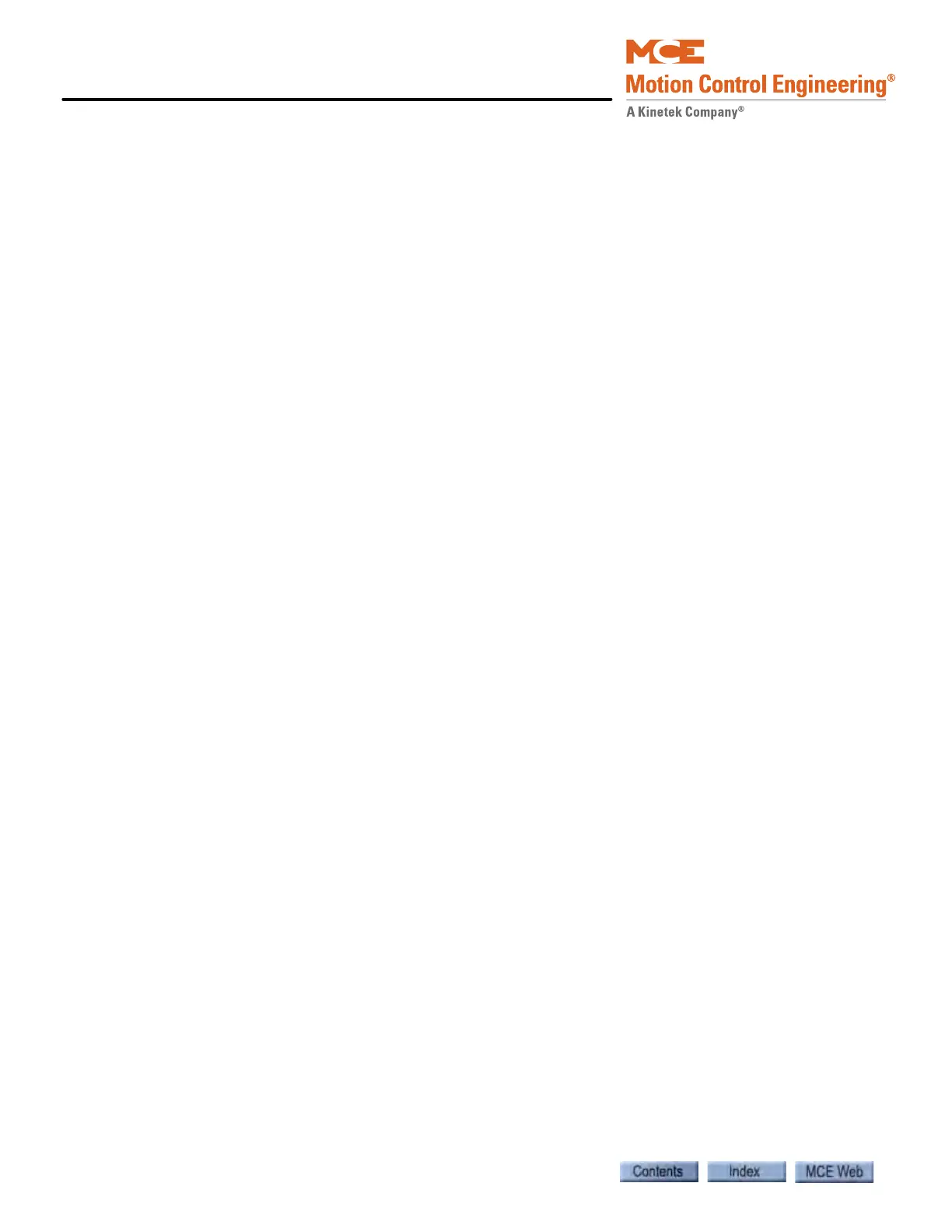iView - System View
10-4 Manual # 42-02-7223
An Overview of System Options
Depending on user needs, the iControl System can be configured in a number of ways. System
functions can be performed by a central dispatcher (iCentral). In addition, each iController can
perform certain system functions depending on its configuration (Simplex, Local, Swing or
Local / Dispatcher).
The following are brief descriptions of the various ways in which iControl can be configured.
Please refer to “iControl System Options” on page 10-5 for additional information.
Simplex An elevator operating alone, not connected to a group, is called a Simplex. The
parameters which control the Hall Call Eligibility, Parking, Parking Eligibility, etc. are pro-
grammed on the car controller’s System View tabs. Simplex operation is enabled via the Sim-
plex car parameter on the Controller > Configuration > General > General tab (see
“Configuration - General” on page 9-117).
Local MCE uses the term Local to refer to an individual car that is part of a group of eleva-
tors. Dispatching and parking functions for a Local are performed by either a Local / Dispatcher
or a Central Dispatcher. The only System parameter used by a Local car is the Car label on the
System Configuration > Building tab.
Swing - Local (Swing) Local (Swing) is displayed on the iView status bar when a
Local car has been configured so that it can, on command, operate independent of the group
using an auxiliary hall call riser. Swing is displayed when the car is actually on swing operation.
The parameters which control the Hall Call Eligibility, Parking, Parking Eligibility and (if appli-
cable) CFSS and Security while the car is on Swing operation, are programmed on the Swing
car’s System View tabs and stored on the Swing car controller. Automatic Swing operation, is
enabled via the Automatic Swing Operation Enable parameter on the Controller > Configura-
tion > Passenger tab (see “Car Operation - Passenger Tab” on page 9-41). Swing operation can
also be initiated using the Swing Operation Switch input which can be programmed using the
Controller > Configuration > I/O Boards tab (see “Configuration - I/O Boards” on page 9-122).
Local / Dispatcher - Local (Alternate Dispatcher) Beginning with the Decem-
ber 2006 Release, in addition to performing car control functions, iControllers can assume full
dispatching responsibilities for a group of elevators. Local / Dispatcher is displayed on the sta-
tus bar 0f a Local car that is performing the dispatching functions. One or more Local cars can
be designated as an Alternate Dispatcher, meaning that they can act as a backup for a central
dispatcher or as one of several potential dispatchers for a group than has no central dispatcher.
The Alternate Dispatcher controls on the System Configuration > Building tab are used to des-
ignate the cars and preference order for selecting the Local / Dispatcher (see “Building” on
page 10-7). The Dispatching, Hall Call Eligibility, Parking, etc. parameters are programmed on
the System tabs of the car that is currently the Local / Dispatcher. These settings are automati-
cally copied to all cars designated as Alternate Dispatcher.
iCentral A central dispatcher (iCentral) can be used to perform the dispatching functions
for a group of iControllers. The iCue dispatching software runs on a dedicated PC or embedded
microcontroller. This solution is used for the most demanding iCon
trol systems. When iView
connects to a central dispatcher, iCentral is displayed on the status bar and iView displays only
the System view windows and tabs. The Dispatching, Hall Call Eligibility, Parking, etc. parame-
ters are programmed on the central dispatcher’s System tabs and are automatically copied to all
cars designated as Alternate Dispatcher.
